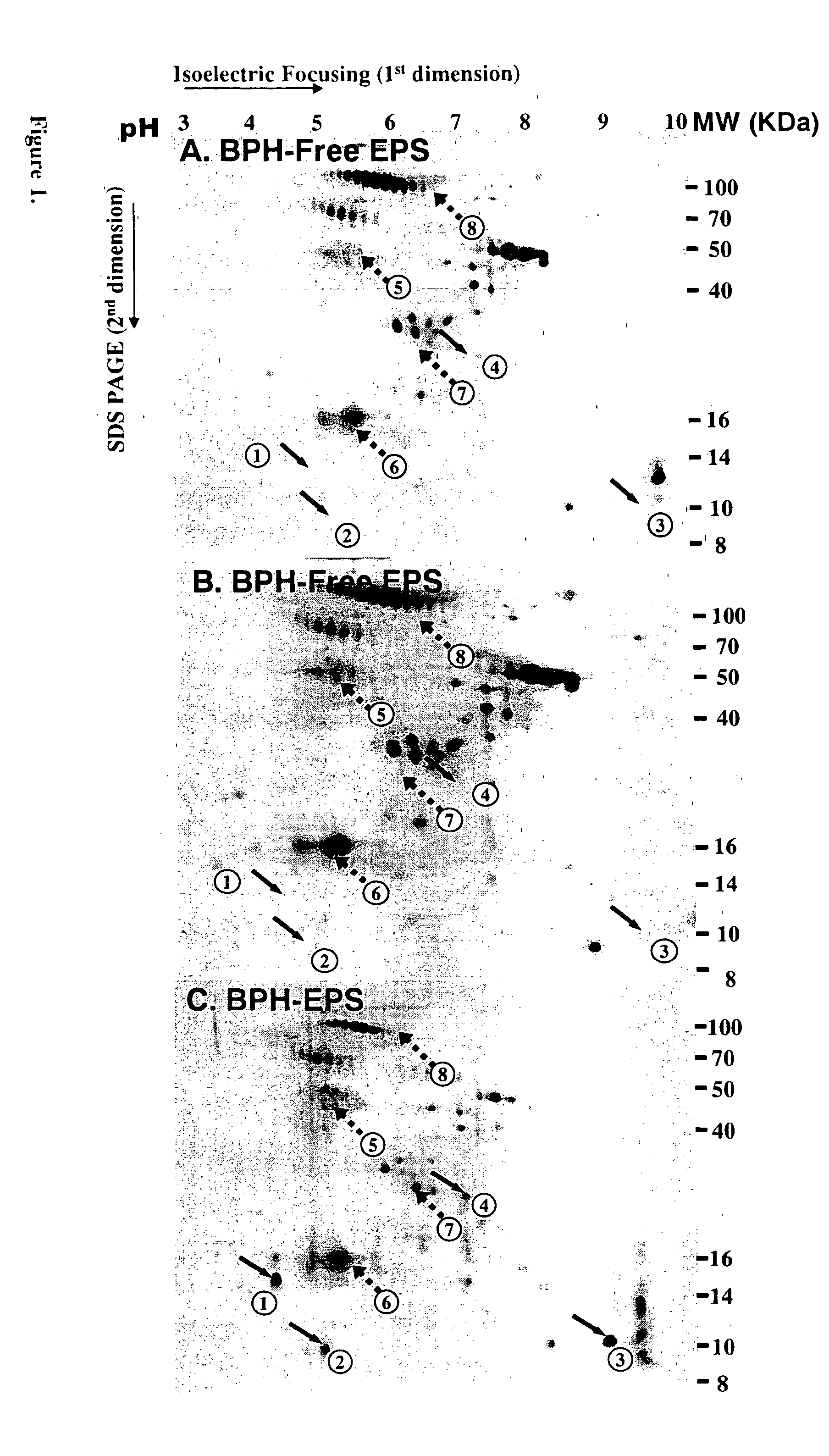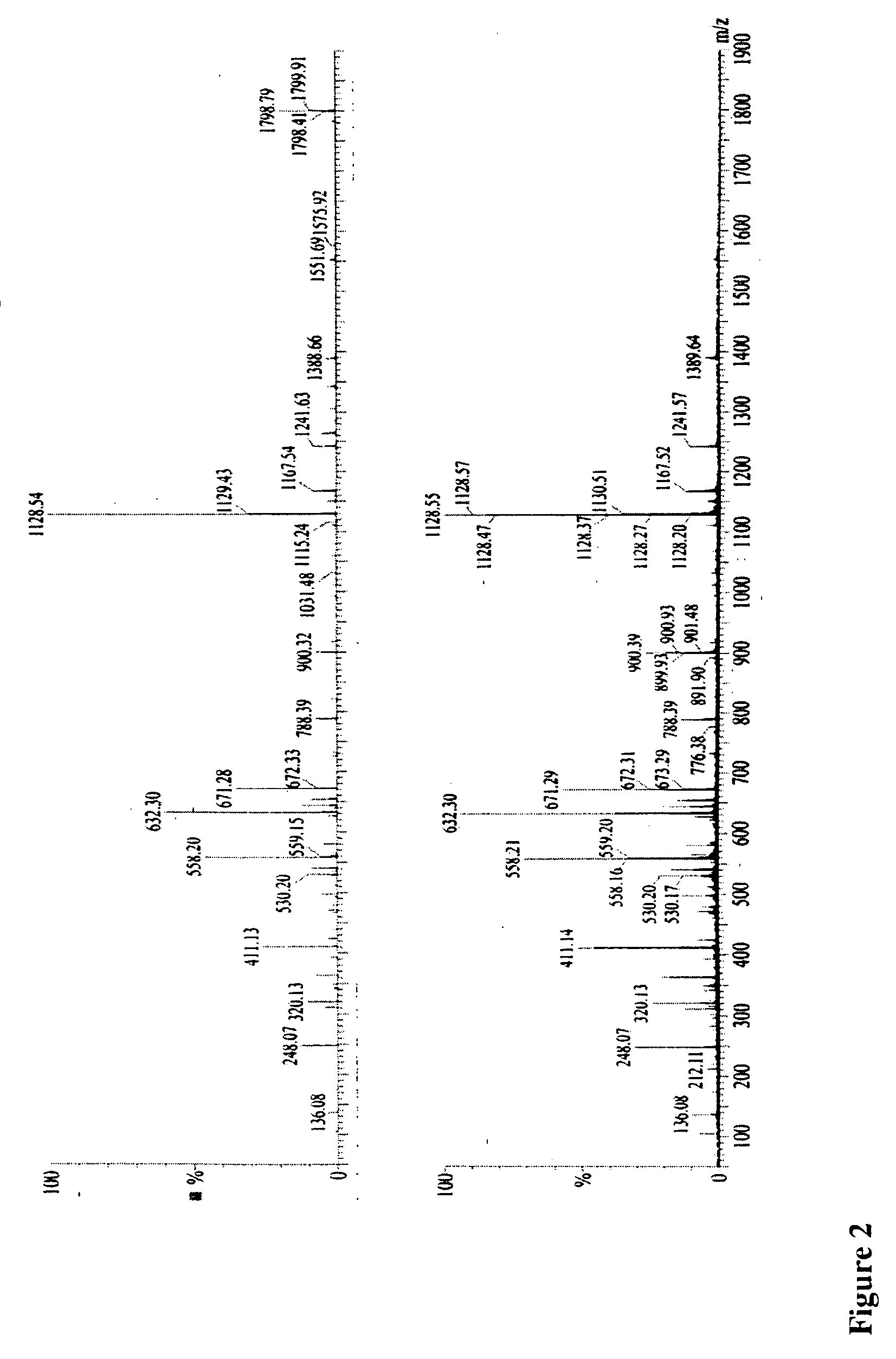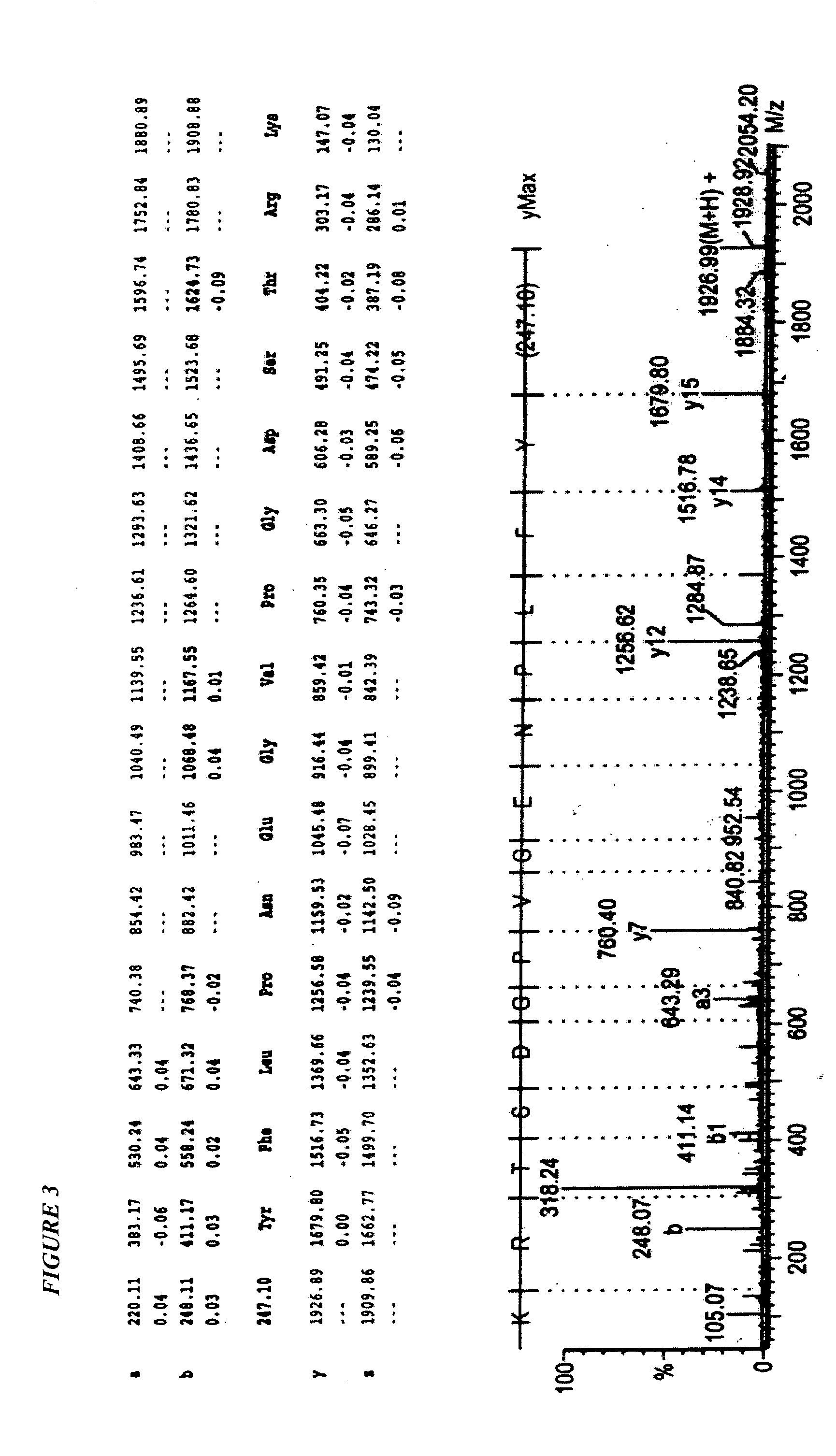Protein markers for human benign prostatic hyperplasia (BPH)
a benign prostatic hyperplasia and protein marker technology, applied in the field of protein markers for detecting benign prostatic hyperplasia (bph), can solve the problems of increasing urine outflow obstruction, reducing the compliance of the prostatic urethra, and symptomatic bladder outflow obstruction
- Summary
- Abstract
- Description
- Claims
- Application Information
AI Technical Summary
Problems solved by technology
Method used
Image
Examples
Embodiment Construction
[0024] Definitions
[0025] As used in this application, except as otherwise expressly provided herein, each of the following terms shall have the meaning set forth below.
[0026] As used herein, “subject” shall mean any animal, such as a primate, mouse, rat, guinea pig or rabbit. In the preferred embodiment, the subject is a human.
[0027] As used herein, “protein markers” shall mean proteins found whose levels correlate with the type cancer. “BPH protein markers” are proteins whose levels correlate with the diagnosis of BPH.
[0028] Embodiments of the Invention
[0029] This invention provides a method for determining whether a subject is afflicted with Benign Prostate Hyperplasia (BPH) comprising obtaining a sample of prostatic fluid from the subject and analyzing the sample of prostatic fluid to detect the presence of BPH protein markers to determine whether the subject is afflicted with BPH. In the preferred embodiment, the subject is a human male. The sample of prostatic fluid may be...
PUM
| Property | Measurement | Unit |
|---|---|---|
| mass | aaaaa | aaaaa |
| voltage | aaaaa | aaaaa |
| voltage | aaaaa | aaaaa |
Abstract
Description
Claims
Application Information
 Login to View More
Login to View More - R&D
- Intellectual Property
- Life Sciences
- Materials
- Tech Scout
- Unparalleled Data Quality
- Higher Quality Content
- 60% Fewer Hallucinations
Browse by: Latest US Patents, China's latest patents, Technical Efficacy Thesaurus, Application Domain, Technology Topic, Popular Technical Reports.
© 2025 PatSnap. All rights reserved.Legal|Privacy policy|Modern Slavery Act Transparency Statement|Sitemap|About US| Contact US: help@patsnap.com



